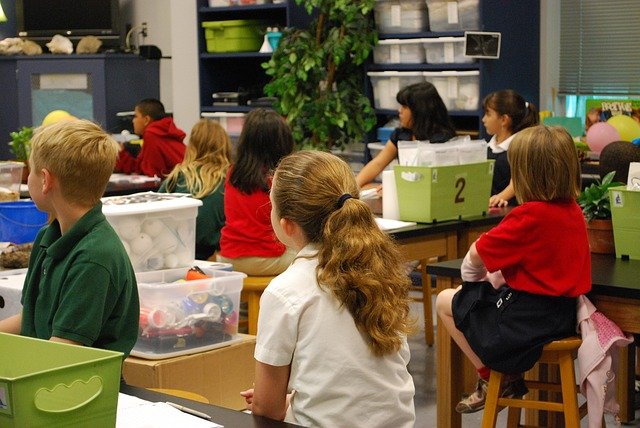Sign up for our daily edtech news briefing today, free.
As a first-year science teacher for fourth- through sixth-graders during the 2019-2020 school year, I made it a point to focus on building my relationships with students. I really wanted to get to know them as whole people and not just their skill sets in science. Of course, the fact that I had 300 students — with 36 of them in the room at one time — made it a challenge to get to know each individual student.
Thankfully, the foundation of my science curriculum is hands-on learning, which organically lends itself to student engagement, both with me and with each other. I structure my lessons around students working in pairs or in groups, investigating questions through experimenting and collecting data.
Additionally, I assign science notebooks where students record their understandings and compile their smaller ideas together to help better understand those big phenomenon questions. The idea of having this individualized science notebook makes students “feel like a scientist” and further helps connect them to our learning. I am able to look through those notebooks and get a feel for who these students are as people, and as student scientists.
I also got some help in my quest to get to know my students from the Twig Science curriculum. I have found its structure and interactivity to be a key in getting to know my students even better.
The curriculum is organized by modules, each of which starts with an anchoring phenomenon – that’s a big question. Some of these questions include “How do matter and energy flow through an ecosystem?” and “How have weathering and erosion sculpted some of Earth’s most fascinating landscapes?”
In answering these big questions, students can discover local phenomena that’s happening right outside, such as a drought, or something happening on the other side of the planet, such as underwater volcanoes. In every module, we come back to these big questions as we piece together parts of the unit. This helped me because, as a new teacher, you can get so wrapped up in thinking, “Oh, my kids need to know this one standard or this one piece of content,” that you don’t really come back to the big idea.
I have applied that same concept to other parts of my teaching, making a habit of moving beyond teaching little pieces of information and always returning to the big idea of each module.
I also tie in real-world examples of science by updating students on current events related to the unit we are studying which tends to spark conversations. We always end the week by watching Twig Science Reporter, which is a weekly video dedicated to sharing relevant science news geared towards students. Having the opportunity for students to see how scientists use their knowledge throughout the world in various ways allows them to see the value in our learning.
At the end of the school year, I had the opportunity to trial a new product called Twig Create, which is a digital storytelling tool. The students were able to create their own videos, like they would in an app like iMovie, but what’s special about it is these curated videos. There are millions of video clips that students can pull in, and they can add their own voiceover. So at the end of the year, I asked my sixth-grade class to create a little trailer about sixth-grade science. I asked them to answer the question, “What did you learn?” I told them they could make it however they wanted to make it, and it was really exciting to see they made these videos that looked like professional commercials.
Here is an example:
https://youtu.be/d-N9pMtL9Rc]
When I watched these videos, I said to myself, “Wow, I actually taught something this year!” I saw that my students were able to grasp big-picture concepts and, through digital storytelling, they could show me not only what they learned but who they were. I felt confident that I had both taught them the standards they needed to succeed after my class, and that I got to engage with them, and make science fun, in the process.
Hayley Thomas is a science specialist in Irvine Unified School District.She currently uses tools from Twig Education to teach hands-on lab science to students in grades 4-6. She can be reached at [email protected].
_________________________________________________________________________________________________________________________
Have a Tech Tip you’d like to submit? Tech Tip articles must be written by educators. Send your pitch or full piece to Katie Parsons: [email protected]
Like this article? Sign up for our Edtech news briefing to get news like this in your inbox, or check out all of SmartBrief’s education newsletters, covering career and technical education, educational leadership, math education and more.
More from SmartBrief Education:
- Using gamification for assessments
- Teacher-approved online math resources
- Adjusting lab learning in a post-pandemic classroom
- Distance learning while respecting students’ home lives
- 8 ways to make vocabulary instruction more effective
